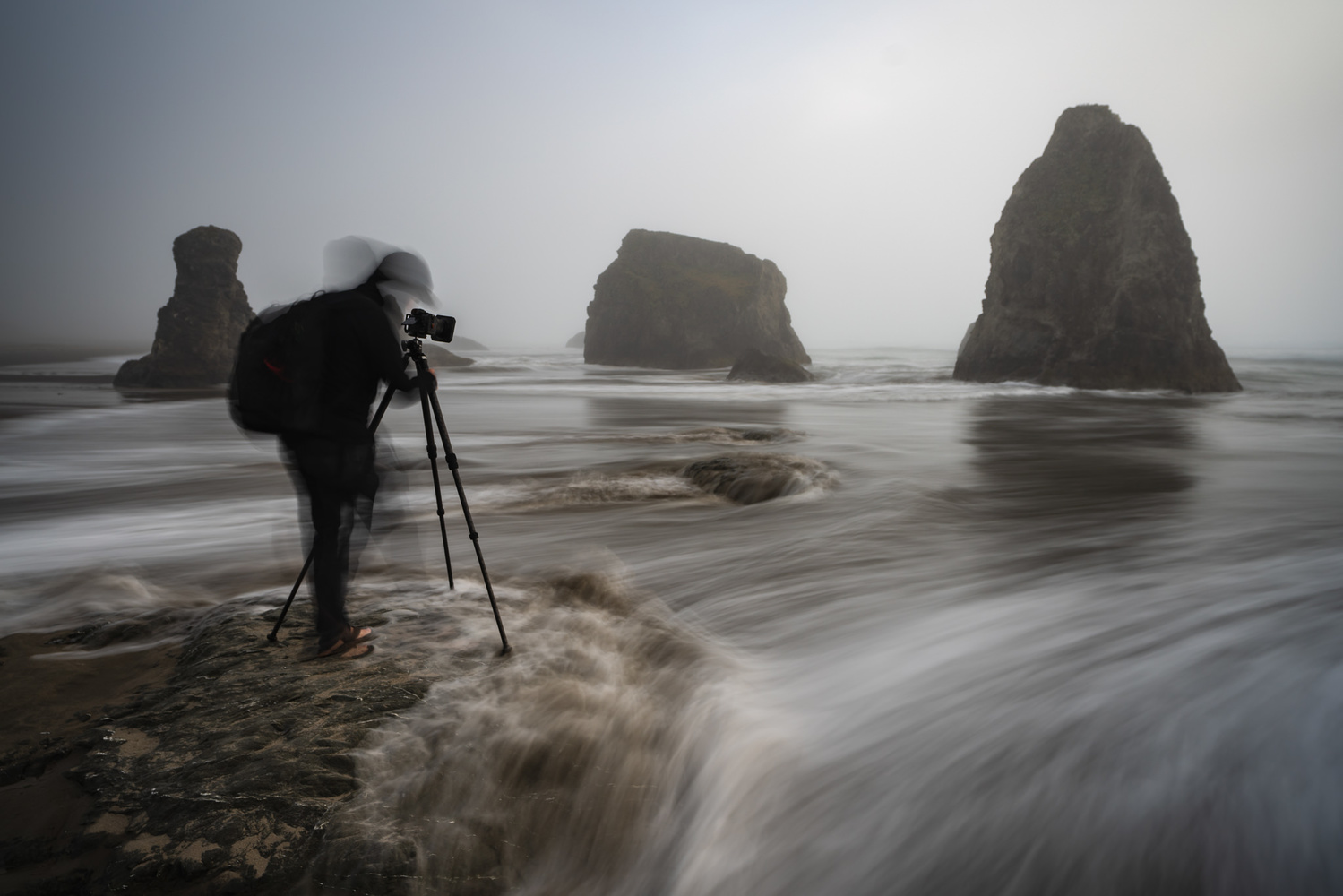I’ve always subscribed to the practice of “paying it forward” however you can, and this article is my way of doing so for the intrepid photographers out there fixin’ to fashion a career in this space.
I’ve been very fortunate to have people in my life who have provided me with invaluable guidance as I steered myself through this space, and if I can help even one of you out by sharing some of the lessons I’ve learned, then I’ll chalk this up as a success. It is worth pointing out that I’m approaching these lessons in broad strokes. The world of professional photography is both vast and targeted. Ultimately, it’s up to you to figure out what you want to offer and who you want to offer it to.
What this post isn’t about is telling you how to be an amazing photographer or how to create a wicked cool vlog. I’m running with the assumption that you’ve already identified that you can create products or services well enough that someone would want to pay you for it.And Who Might You Be?
Before we dive in, I think it’d help to expand a bit on my background in the photography industry as it’s a bit more checkered than the typical professional photographer. While I have been practicing photography since 1996, it wasn’t until 2010 that I gained real working experience in this industry.
From 2010 thru 2013, I was employed at the photo software company, ON1, as their Curriculum and Education Manager. In that time, I learned a lot about the importance of understanding the needs of your audience. I also developed a sense of what it means to establish strong and relevant content and product strategies that will appeal to that audience.
In 2013, I was hired by Google to join the Google+ Photos team as its lead product evangelist. That team has since morphed into the Google Photos team, but my time there proved to be invaluable. I was exposed to a myriad people, all interested in wanting to partner with us. It was in this role that I developed a keen understanding of the importance of relationship building.
In 2015, after two years at Google, I moved on to work with Sony on their Digital Imaging team. Considering that this was right around the time that their full-frame mirrorless camera system, the a7, began experiencing real momentum, I gained a lot of valuable experience around project management and what it meant to be a brand ambassador.

Presenting my photography work on Sony's main stage at CES with Brian Smith is still one of my favorite career experiences
2015 was also an especially pivotal year, because I began experiencing a steady uptick in partnership opportunities to create photos and other multimedia content for companies. As such, I decided to incorporate and launched Matiash, Inc. on January 1, 2015. Since then, I’ve experienced the full gamut of highs and lows as a solo business owner, but I am still here fighting that good fight.
It is through the lens of nearly a decade of these experiences that I’d like to share some of the most important lessons I’ve learned. Rather than create an exhaustive singular article, I’m going to spread these lessons over the course of several posts. I hope they prove helpful.
Lesson 1: Treat Your Business Like a Business
Before we dive headfirst into this rabbit hole, let me make a few disclaimers. First, I am not a business, legal or tax expert, certified or otherwise. I highly recommend you consult with the necessary professionals before embarking on your business journey. Second, I am a US citizen and my business is based in the state of Oregon. Business laws vary from state to state and from country to country. It’s your responsibility to figure out what the laws respective to your place of business are. Cool? Cool.
One of the first and most important lessons I’ve learned is that when you say that you’re in the business of photography, the emphasis needs to be on the word business. You’ve probably heard it 1,000 times already that professional photographers spend maybe 10 percent of their time practicing actual photography, and now you’ve heard it for the 1,001st time. The 90 percent of the time that a professional photographer is not out shooting, they’re building their business, and if your goal is to derive a sustainable income from photography, you should have some form of a business entity established.
In my case, that meant forming an S-Corporation on January 1, 2015. It also meant that I needed a Certified Public Accountant (CPA) to help me manage my books, file my taxes correctly, and ensure that I’m operating in the black. It also meant finding a lawyer who could review contracts that I receive from and send to clients. I had to teach myself how to work with invoices. I had to establish separate bank and credit accounts for my business. I had to keep a separate track of business travel, purchases and mileage driven for tax write-offs. In short, I had to learn what it means to make a living from photography instead of letting my living allow me to simply enjoy it as a hobby.
Most importantly, I quickly learned the importance of money management. Oh cool. I just earned $1,000 from a photo gig? Wrong. I grossed $1,000. The first thing I need to do is take 30 percent of that and transfer it to a savings account for taxes. Next, 20 percent is redirected back into the business to pay for operating costs and future expenses. Of that, 50 percent goes to my share of my family’s joint expenses. What remains is my net income. That’s the profit that I can spend or save to taste.
In the end, it helps to think of yourself less as a photographer and more as a businessperson who operates in the photography industry. Which leads me to my next lesson.
Lesson 2: Build a Business Plan and Fight Like Hell For Its Success
Let’s say I ask you: “How do you earn your income as a professional photographer?” If you can’t provide a succinct and convincing answer in real-time, then you need to re-evaluate what your business plan is. Unless earning income is not a factor in how you operate your business, you’ll need a business plan. Fortunately, there are tons of templates to help you get started.
I’m serious. Find a business plan template and complete every single section that is pertinent to you. You’d be surprised how enlightening the practice of spelling out what the exact details of your business are. A good business plan will lay out items like what your sources of income are expected to be, how your products and services will stand apart from others, and who your competition is.
Once you have your business plan clearly defined, you should quickly realize that it can serve as a road map for what you have to accomplish, at least for the first 6-12 months. It’s also important that you audit your performance against the goals set in your business plan to ensure that you’re heading in the right direction.
Let’s not mince words. The photography space is an ultra-saturated one. While this fact doesn’t mean that you can’t find success here, it will require you to have a clear understanding of how your products and services are different (better) than the thousands of other professional photographers vying for the same audience. Which brings us to the next lessons.
Lesson 3: Know How to Identify Your Target Audience
At some point, it’ll be time to, you know, make money. If you’ve already completed that business plan of yours, you should have a good idea of what your unique products or services are and, to an extent, who the audience is that you will solicit for business. For simplicity’s sake, let’s say that the products you’re offering are premium and supremely unique photography training videos.
If having a unique set of products or services is one half of the equation, knowing who your target audience is would be the other half. The rub is that knowing your target audience can have many facets, it can be dizzying, and like a flowchart, once you identify one piece of it, additional data points need to be obtained. If your go-to-market strategy is to share your offerings on social media, you may be in for a world of disappointment (unless you’ve budgeted money for paid media ads).
Don’t get me wrong. There certainly are some photographers with exceptional social reach who can convert a substantial percentage of their audience into paying customers for their video training courses. My point is that you probably shouldn’t hitch your goals to that particular strategy unless you’ve already grown that audience and have established that some percentage would convert to paying customers.
Over the years, I’ve created a deep portfolio of written, video, and audio content built specifically to help photography hobbyist and enthusiasts grow their own creative pursuits. The more content I created, the more my audience grew, and as I engaged with them directly, I was able to identify what their needs were. With that knowledge, I was able to create highly targeted content that I knew would resonate with them. Without taking the time to learn who my audience was, how to most effectively engage with them, and identify what their needs are, I’d likely go down a path of alienating them, because nothing I’d create would be helpful to them.
To Be Continued
Before I began drafting this article, I compiled a list of lessons that I’ve found to be invaluable during the early years of my business. My hope is that the lessons in this article along with the lessons I’ll share in subsequent articles will give you the knowledge and confidence to build a successful business in the photography industry. There are a lot of people clamoring for a slice of the pie, but believe me when I say that there’s plenty for everyone if you know where to look.














The lessons in this post are pretty much common sense.
Curious. Does that make them any less relevant or helpful?
Nope, definitely helpful and a good reminder!
No, not at all. My intention wasn't to imply that there's no value, just that it's obvious to some.
That totally fair and I appreciate your reply, John. Admittedly, I'm one who is mostly lacking in the common sense department and created this series as a resource I wish I had when I first started building my own business. You'd be shocked how many obvious things are lost on me.😅
People to whom this tips are obvious won't benefit that much, that's true. But then again, they are not the target group. There are plenty of people who have no idea how to run the business, and running a photography business is nothing different.
Great tips, Brian - looking forward to other parts! :)
Thank you very much, Andrzej! I appreciate that.